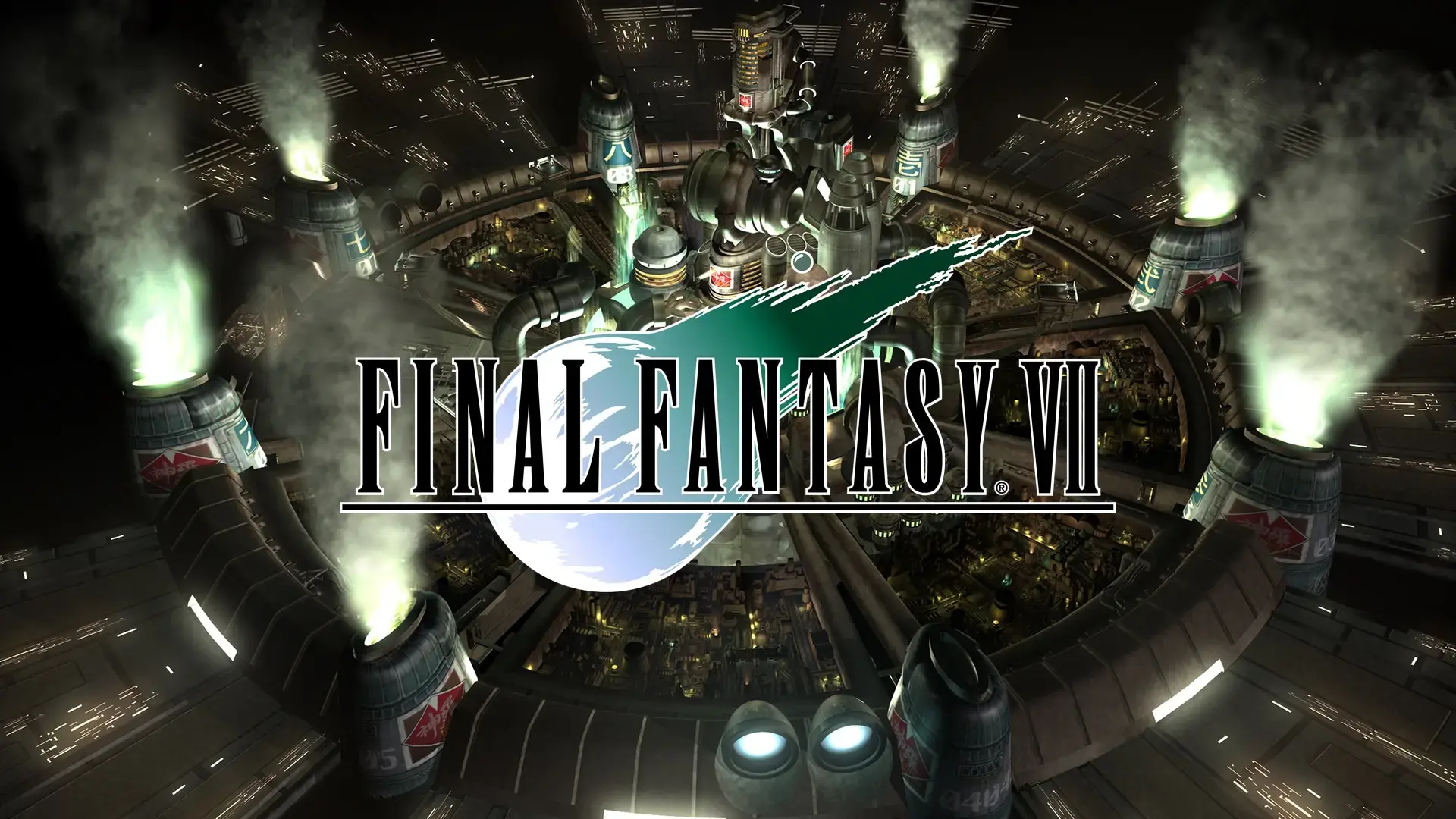The Complete History of Role-Playing Games (RPGs):: Part 9 – Final Fantasy: From Niche to Mainstream
Role-playing games, or RPGs, form one of the most lucrative genres of computer games in the world today, demanding tens of hours of dedicated play from gamers and rewarding them with rich storylines, memorable characters and an often emotional escape into other worlds.
How did RPGs come to be? What are their origins and how did this once-minor pastime of interactive storytelling become an industry behemoth? Here at Ultimate Gaming Paradise, we have some of the answers, brought to you in this growing series of articles.
Now, in part nine, it is time to look at the game that changed everything.
Episode Eight: From Niche to Mainstream
To say that there is one single game that changed the face of the genre entirely is quite a conceit. In this case, though, it is true.
Final Fantasy VII completely redefined the landscape when it came to RPGs, achieving more than any game before or since. It moved role-playing games from being a flourishing niche market into a worldwide mainstream phenomenon, polished many established concepts and introduced a few more, brought beautiful 3D graphics and stunning rendered cutscenes to the audience, and told a story that was not only engrossing and engaging in every part but did the one thing all good stories should.
It made us cry.
Only the soulless played Final Fantasy VII all the way through and didn’t cry. It’s just a fact.
So, how did Final Fantasy VII manage to get it all so right?
Developing on a Series
There is a ‘seven’ in Final Fantasy VII’s title, so let’s start there. This is not a game that came from nowhere, it was part of an established JRPG series that stretched back to 1987, a full decade before this game’s release on January 31st, 1997. Ten years is a lot of time to learn how to do things well, and the team at Square put all that experience to good use. Like its older siblings, FFVII was being developed as a game for Nintendo’s consoles. It began life in 1994 as a game for the SNES, but the ambition for it was too great and the desire for beautifully rendered cut scenes made working on the Super Nintendo simply impossible. Even the N64 which was to replace it didn’t have the data storage needed. This epic tale needed something more.
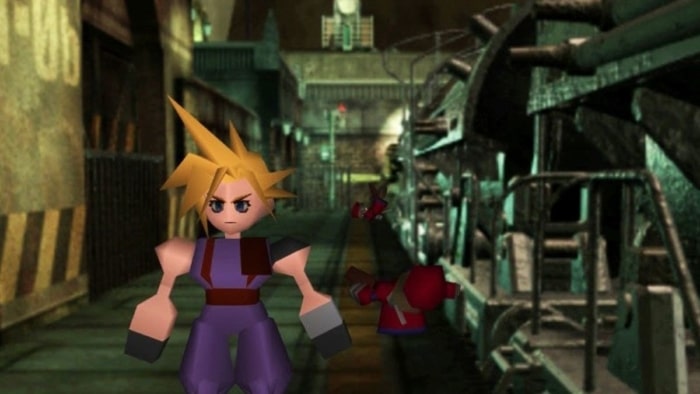
It needed a PlayStation.
Moving from Nintendo to Sony’s impressive PlayStation was doubtless another factor in the success of the game. PlayStation was outselling every other console of the generation by a huge number and had already begun to seep into the homes of non-gamers and more casual players, giving a far wider worldwide user-base than Nintendo could offer (in its lifetime, the original PlayStation outsold the N64 by three times!).
Importantly, the PlayStation used a CD-based storage format, providing Square with enough storage to fit in all those cinematics, although they still needed 4 CDs to do it!
Because the game was part of an established series, there was plenty of foundation for them to build on. Concepts such as summoning huge elementals to help, the Active Turn Battle combat system, a separation between the use of world maps and set locals, party development, and in-depth storylines had all been there for many instalments of the series. Nonetheless, Final Fantasy VII was willing to bring plenty of newness to the table, too, with its brilliant Materia system for upgrading weaponry one example of the game’s technical evolution.
Its provenance also meant that Square knew what it was doing when it came to character connecting, art and graphics, and the importance of sound.
In the role-playing gamers world, Final Fantasy was already a name to know. Final Fantasies IV, V and VI were all considered masterpieces of the SNES era, and the three earlier games were beloved by those who had played them, though at the time, finding people who’d experienced such rare titles as Final Fantasy II was unlikely, especially in the West, and even more so in the UK. It would take the fervent fandom of Final Fantasy VII to mean the demand for earlier entries in the series was so huge that reissues were inevitable.
Dressed to Impress
Final Fantasy VII looked amazing. More than amazing, it was quite honestly the best-looking game of its time, and not just in RPG terms, but across every genre. If you were playing Final Fantasy VII in your living room and someone, anyone, came in behind you and got to see a glimpse of a cutscene, or one of the impressive summon sequences, then they would stop and stare. Questions would be asked. “What is this game?” almost always being one of them—at least, in the beginning. Soon, everyone would know what this game was.
Having chosen some masterful artists throughout the series’ development, the art and design for the game combined the brilliance of Yoshitaka Amano, whose more traditional Japanese style and use of silkscreen processes had given all previous Final Fantasy games a deep and otherworldly aesthetic, with Tetsuya Nomura’s more Manga-like designs. It is Nomura, with his fine attention to detail, who drove the character designs to have clothing and items that represent their personalities. Now that the graphics were finally beginning to look at how the artists envisaged the characters and locations in their minds, they were able to really bring every aspect of their imagination to the screen.
Why is that important? In Part One of this series, I wrote how those early Dungeons and Dragons players wanted to use technology to bring the fantasy worlds of their imagination to life, a desire that led to the very first computer role-playing games. Now, finally, this was being seen in a way that didn’t require any suspension of disbelief. These weren’t ASCII characters to represent monsters, such as the early Rogue games, nor were they tiny sprites running around a two-dimensional map that encapsulated the JRPG style of the 1980s and early 1990s. No, with Final Fantasy VII, what we were looking at on-screen needed no interpretation or explanation. It was exactly, beautifully, amazingly, and precisely what it looked like.
Fantastic!
Sounding Wonderful
If the graphics of Final Fantasy VII were something to write home about, then the sound and music were also well-deserving of a postcard.
Nobuo Uematsu, the now-famed composer of most of the Final Fantasy music, was on top form here, bringing both subtlety and engaging heaviness to the game. It’s a masterwork of soundscapes, which is really important in a role-playing game where the music tends to loop while you explore a particular area.
There are a whole host of role-playing games that came before Final Fantasy VII, of course, and some of them with excellent soundtracks, but before the audio presence of the PlayStation and that generation of consoles, it was all just a little bit bleepy. It wasn’t unusual for a player to load up their RPG of choice and then turn the sound down to zero while they played a CD or tape in the background. Many games of the earlier years were more likely to be remembered by an unofficial Jean-Michel Jarre, Metallica, or Pink Floyd soundtrack as they were the actual in-game music.
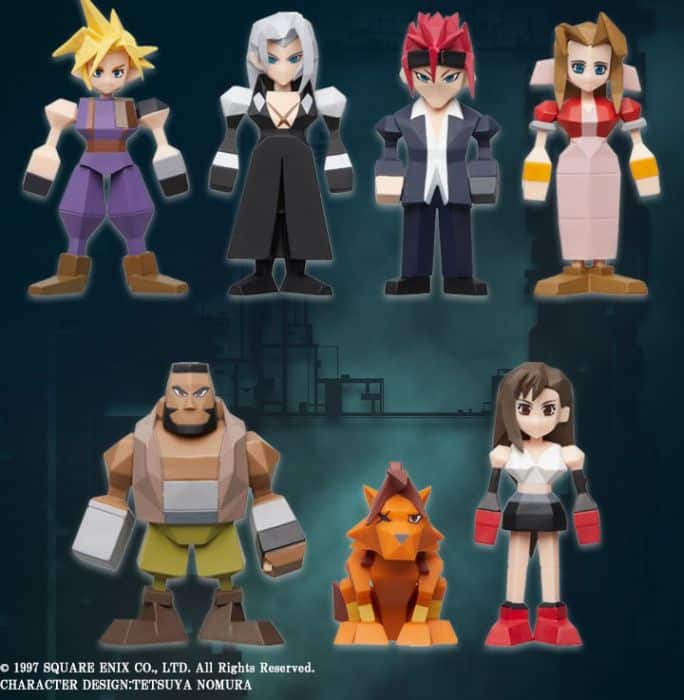
This changed significantly with Final Fantasy VII and, while it was not this game alone that was bucking the trend as many non-RPG games of the era were also impressing with their soundtrack, this was perhaps the first RPG that all-but-demanded that you listen to its in-game music rather than eschew it for a favourite band. Of course, there are fans of 8-bit ditties who will argue that even the offerings of the NES-era tunes are worth a listen, but an appreciation of the music up to this point had been quite niche—now, like the game itself, enjoying the in-game soundtrack was going more mainstream.
Bringing Fantasy to Life
OK, so it didn’t really manage to conjure elementals into your living room but watching the magical sequences where the characters summoned help was simply awe-inspiring.
While the first summon (Choco and Mog) felt a little odd and cartoony, once players got their hands on classics like Ifrit and Shiva, the sheer power that they represented was fabulous.
Summons had long been a mainstay of the Final Fantasy series but never had they had such an impact. Now, when you chose to call upon help from these ethereal creatures, you were treated to a show of might that cemented the game in your mind forever.
Role-playing games have always embraced magic and, where magic didn’t quite fit the setting, there was typically a renamed replacement. It’s understandable, of course; this is escapism, after all, and don’t we all wish for some sort of superpower?
In the early days, Dungeons and Dragons sold itself with the embodiment of magical and mythical creatures in the title, and ever since then, magic has been at the core of good role-playing games.
Huge majestic creatures and evocative spell effects are the pinnacles of a role-player’s enjoyment. Rare is it that a player wants to tell you the story of their party trudging for six days through some muddy terrain, but stories featuring magic are everywhere. It’s… well… magical!
With its wide breadth of magical sequences, Final Fantasy VII really played into this idea and games have been copying ever since. It brought those early desires to life. “What if we could see the magic?”.
It’s one thing to say “You cast a lightning bolt, doing twenty-three damage to all creatures within thirty yards of your pointing finger,” and quite another to see all that electrical sparking on screen.
Are You Sitting Comfortably
Anyone who hasn’t experienced the Final Fantasy VII story has missed out on something truly wonderful. Sure, there are plenty of moments where it’s a little too cringing, and others where it descends into a convoluted mess that’s hard to untangle, but as a whole, the Final Fantasy VII storyline is an utter masterpiece.
Plus it has that moment in it. A moment which I refuse to spoiler, despite it being twenty-five years old and you’ve all already heard about even if you haven’t played it, because it’s special and wonderful and heartbreaking all at once. Computer games rarely evoked such emotion, I don’t know of many that made a whole community cry out in shared despair and disbelief so completely.
The Final Fantasy VII story has been added to, cleaned up a bit, reworked and polished in later years to try to make more sense of it, but none of that was needed because it’s pretty fabulous in the original.
What it did for RPGs is immense. It broke moulds, carved new paths and did a lot of other things for which we now have a range of clichéd metaphors. Final Fantasy VII’s story was immersive and demanding, interspersed neatly alongside the action part of the game. Sometimes five or six hours could go past where you were playing combat after combat, trying to get past a certain boss, or just aimlessly wandering, but you’d come back to the story and be drawn back in immediately.
There are games since that have surpassed it, but they had some strong shoulders to stand on. Prior to 1997, nothing in the computer gaming world even came close.
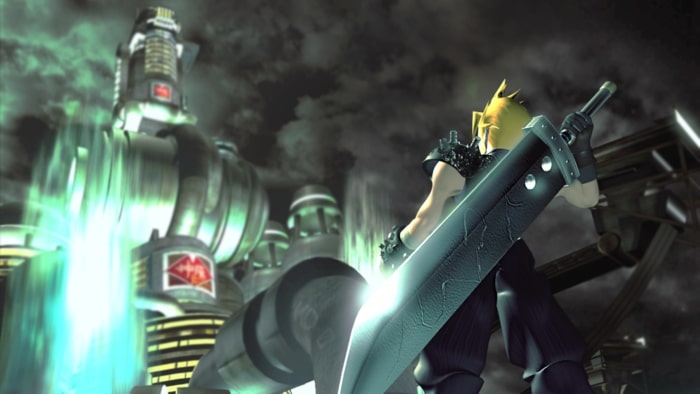
Attacking the Mainstream
Before Final Fantasy VII, RPGs were for nerdy geeky types. People hiding away from the sun, drinking cans of Coke by the ton, and willing to go a good few days without washing if needed.
Of course, that’s not what everyone was like at all, but it’s a stereotype that stuck for a reason.
With Final Fantasy VII, however, it all changed. RPGs were for everyone. There was a modern sci-fi feel to it, and it was on a PlayStation, which had a cooler image.
Plus it had an $80,000,000 advertising budget.
Say what?
Games being advertised was nothing new in 1997, of course. Plenty of games were pushed, but eighty million dollars?
This was a game that had the weight behind it of a blockbuster film. It was properly localised, with top-notch translations, it had the power of both Square and Sony behind it, and it was gathering reviews that weren’t just good, they were stellar.
It was important to the powers-that-be that Final Fantasy VII be seen and acknowledged by everyone. There were even billboards and TV advertising.
“Beyond the edge of reality, lies a story of ultimate conquest, a story of war and friendship, the story of a love that can never be…”
Hmm.
But those adverts also touted other important info, showing the new 3D graphics, talking about how it had taken 200 animators, describing how the story was too complex for a motion picture—little details that made non-RPG enthusiasts turn their heads a little, and perhaps, just perhaps, be willing to give this a try.
It sold PlayStations. In the two years prior to Final Fantasy VII, Sony had sold around ten million original PlayStations. Six months later, they’d sold sixteen million. Sure, it wasn’t just Final Fantasy VII, but it helped.
Then it crossed one of the biggest boundaries of all—it was ported to the PC. While the PC version wasn’t quite as impressive as the PlayStation one, and some purists spoke about the minor differences, the fact that a console-based RPG of this renown was available for people who didn’t own PlayStations was huge. Another one million sales of the game were for Windows users, adding to the many millions of copies that were sold for the PlayStation.
It won awards with titles from “Game of the Year” through to “Outstanding Achievement in Art and Graphics”, passing “Hottest VIdeo Game Babe” (for Tifa) on the way. If there was an award someone could offer it, they generally did.
But most of all, players loved it. Not just JRPG fans, not even just RPG fans, but everyone. Even those stalwart RPG fans who swore by Dungeon Master and refused to play anything on a console loved it.
And playing a role-playing game on your TV was no longer a niche thing. The tide had turned, and RPGs were for everyone.
The Legacy
Without Final Fantasy VII there would be no Demon’s Souls, no Skyrim, no Mass Effect. That’s not to say those games wouldn’t have necessarily come about with the influence of Square’s masterpiece, but even if they had, they’d be sideline titles. Just small budget games that would be beloved by the community but largely unheard of.
Final Fantasy VII opened the eyes and ears of the world to the genre. It set the standard for telling a story in a game, and it put made both extended cutscenes and in-game 3D graphics the norm for RPGs going forward. Its long and impressive magic sequences for summons inspired developers to always go one better, and its music set a standard for everything going forward.
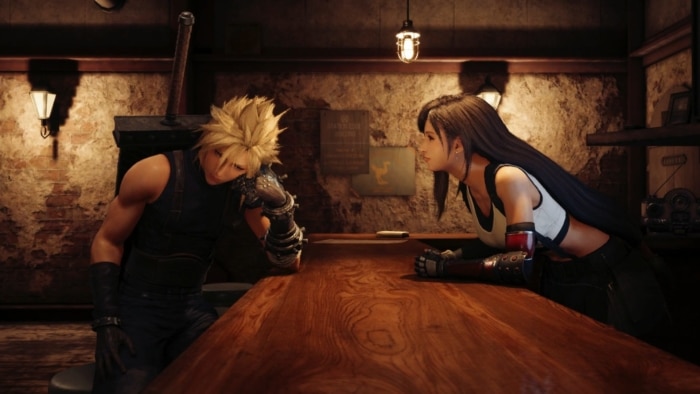
It wasn’t just influential, it was seminal.
Final Fantasy VII lives on today, remade in its entirety. The PS4/PS5 version of the game is a fantastic reimagining of this wonderful classic, bringing even more vibrancy and beauty to this epic.
Coming Next…
Ever wondered just how much stuff you can carry in a bag? It’s a lot, especially if you are willing to delve down into a dungeon and kill everything you see. Just be careful—demons lurk in the darkness.
Join us next time, when we take a good look at the evolution of the roguelike at the end of the last century.

